The Holiday That Celebrates Apples With Rifles and Cider
Hanging toast on trees feeds good spirits.
After the New Year’s champagne is drunk and the Christmas tree is set out on the curb, the holiday season feels emphatically over. But in many apple-growing regions, there’s still one last celebration in January.
Instead of champagne, the drink is hard cider. And instead of decorating a chopped-down pine, revelers tromp into apple orchards to drink and encourage a good harvest.
Apple wassailing, which has origins in southeast and southwest England, features a procession to the best apple tree in the orchard. There, revelers sing to the tree, decorate it with slices of toast to feed good spirits (and birds), and shoot rifles to scare away demons.
Christmas-carolers may be familiar with the term “wassail.” An old Anglo-Saxon term for “Be in good health,” it became shorthand for both carolling and a spiced hot drink, made with either ale or cider. While pouring cider around tree roots, everyone usually shares a fanciful bowl of wassail.
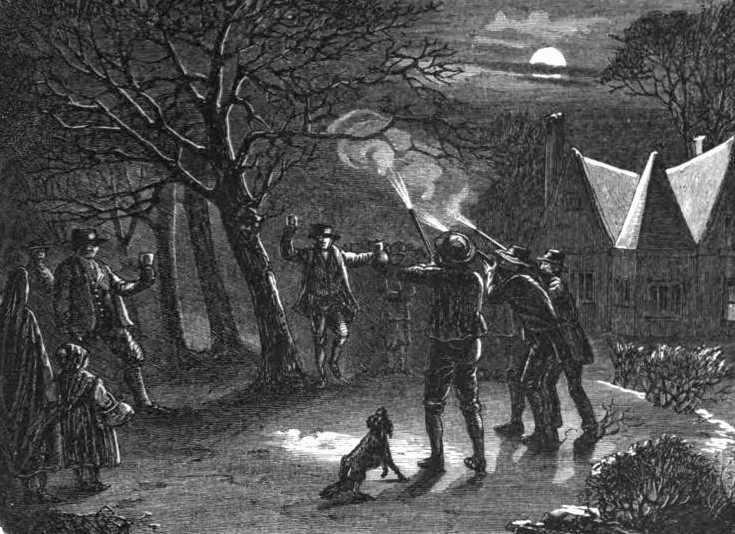
Why do people bundle up and sing to bare winter apple trees? The tradition dates back around 500 years, but some suspect it has roots in the Roman tradition of honoring the goddess of fruit, Pomona. One common element to the tradition has always been noise—apple wassailing used to be called “apple howling” too. Shouting, banging on pots, and even hitting trees with sticks: The custom could be so alarming that authorities tried to end the festivities. In 1576, a church in Kent tried to stop what clergy called a “superstitious” custom. But in 1656, a Sussex rector paid local boys sixpence to “howl” at his trees.
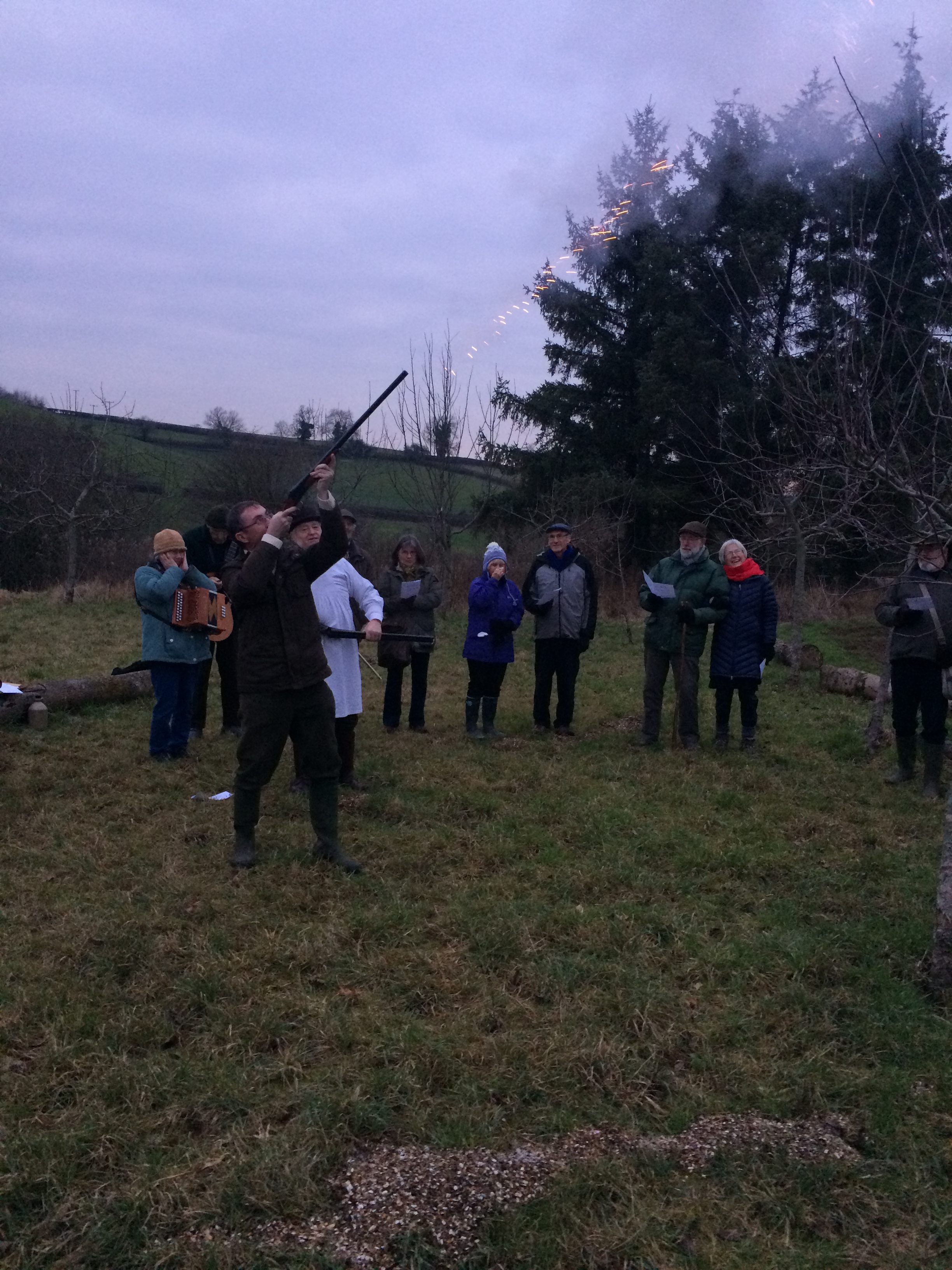
Academic types disagree on whether wassailing was an earnest tradition or just an excuse for hardworking farm laborers to have some winter fun. Even the date is in flux. Often, it’s celebrated on January 5, which is Twelfth Night, the last day of the Twelve Days of Christmas. But Twelfth Night used to be on January 17. When the British switched from the ancient Julian calendar to the Gregorian system, though, in 1752, many counties kept the tradition on the old date. (If you live in an apple-growing area, you can celebrate twice.)

Old English customs faded with the Industrial Revolution, but the tradition still got attention. In 1862, American writer Henry David Thoreau mused on apple wassailing, describing a chant meant to encourage the best-producing tree in the orchard:
‘Here’s to thee, old apple-tree,
Whence thou mayst bud, and whence thou mayst, blow,
And whence thou mayst bear apples enow!
Hats-full! caps-full!
Bushel, bushel, sacks-full!
And my pockets full, too! Hurra!’
After this fallow period, apple wassailing made a comeback (some suggest because of eco-friendly “hippie” culture). “Wassailing plays an important part in our cider-making year,” Penny Adair from Thatchers Cider in Somerset tells me. (She adds that tickets for their wassail are sold out.) Apple orchards in the eastern U.S. and Australia, likely looking to cider-producing Britain for inspiration, began celebrating the tradition too.
At what’s called “Australia’s answer to the Burning Man Festival,” the apple-producing Huon Valley in Tasmania hosts a mid-winter celebration where wassailing looms large. Because of the antipodal climate, the event is held in July.
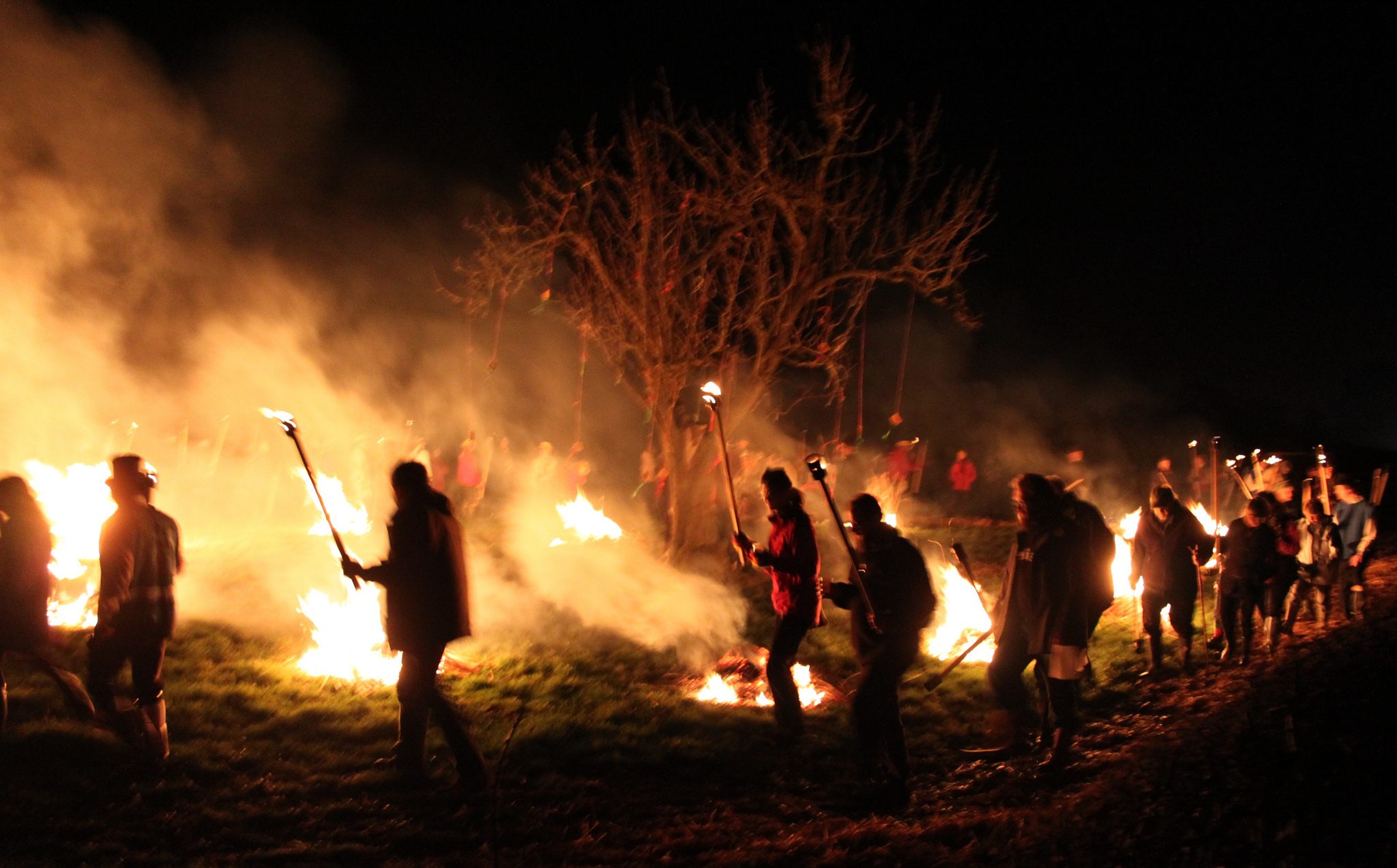
These days, other traditions, such as the Twelfth Night custom of choosing a king or queen for the evening, are often blended into apple wassailing. People can wear costumes and deck themselves out in crowns of ivy, or cover their faces with green paint to evoke the pagan figure of the Green Man. Morris dance troupes, in their colorful beribboned shirts are often on hand to lead the ceremonies. (One less colorful practice, however, is that some troupes wear blackface, a controversial decision which they defend as a longstanding tradition.) Even though the apple trees themselves are leafless and bare for the winter, wassailing is a way to beat back the grimness of winter and celebrate future apple bounty.
So if you’re anywhere near an apple tree this January, fire up the toaster and heat up some cider. The trees are counting on you to hang bread on their limbs, pour alcohol on their roots, and fire guns through their branches.
Wassail Spiced Cider
Adapted with permission from Thatchers Cider
- Prep time: 5 minutes
- Cook time: 30 minutes
- Total time: 35 minutes
- Makes two servings
Ingredients
- 16 ounces of hard or non-alcoholic cider
- 1 piece of star anise
- 1 whole clove
- 1/2 cinnamon stick
- 1 slice of peeled ginger root
- Brown sugar, to taste
Instructions
-
Pour the cider into a pot, and set it on the stove on low to medium heat.
-
Add the spices and as much brown sugar as you'd like. Heat up the mixture, but don't allow it to come to a boil.
- After half an hour, the cider will be steaming and fragrant. Pour into two mugs, and enjoy.
Gastro Obscura covers the world’s most wondrous food and drink.
Sign up for our regular newsletter.
This story originally ran in 2018; it has been updated for 2023.



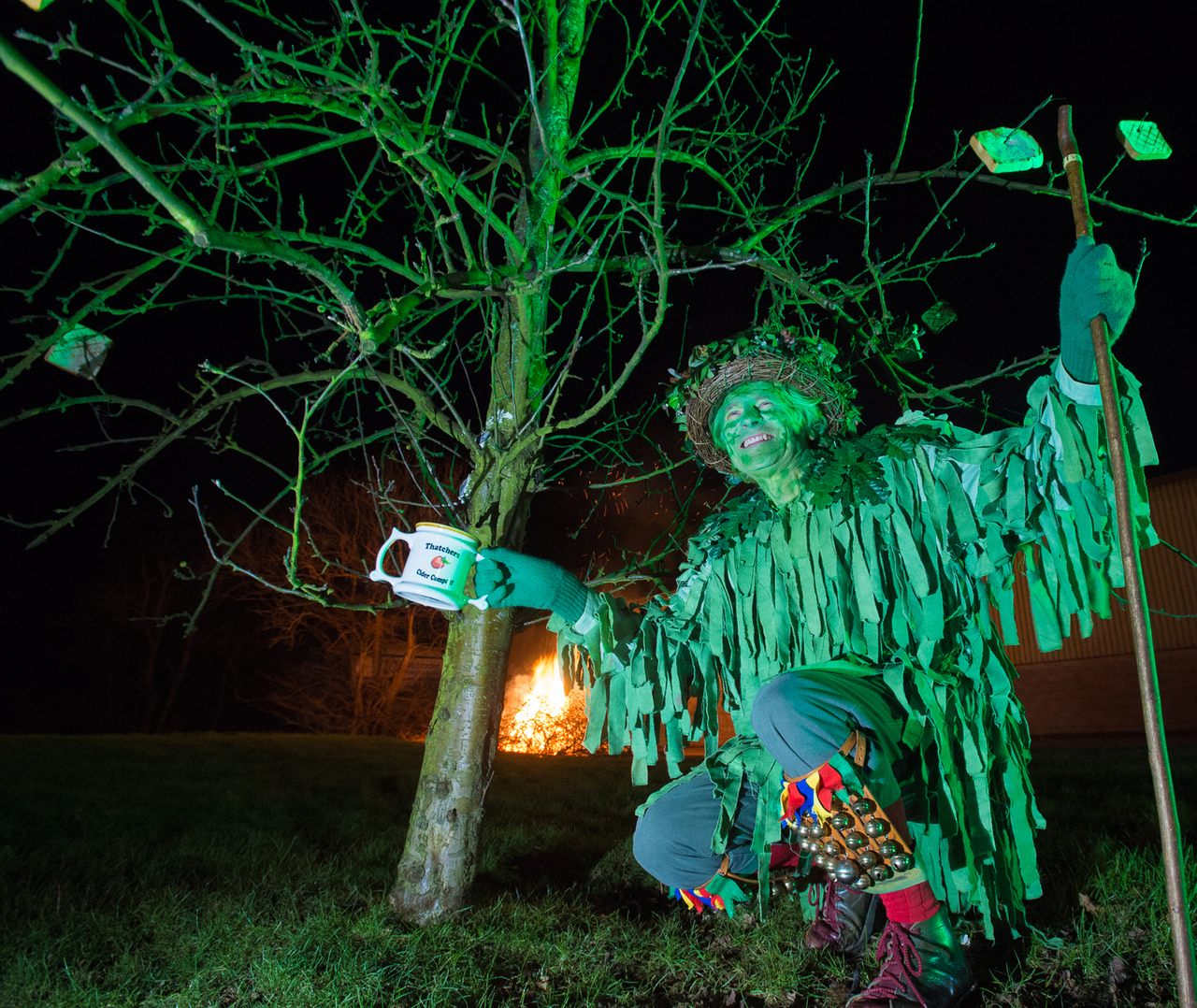




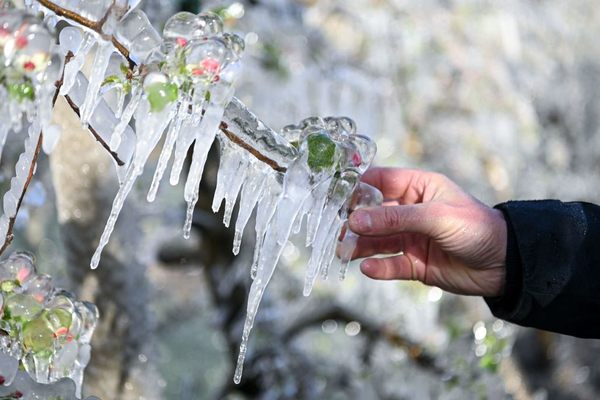
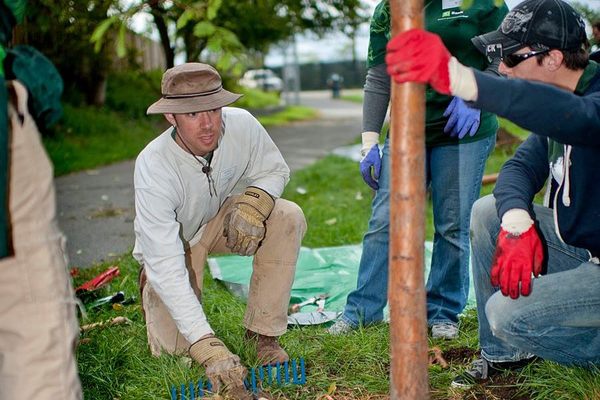





















Follow us on Twitter to get the latest on the world's hidden wonders.
Like us on Facebook to get the latest on the world's hidden wonders.
Follow us on Twitter Like us on Facebook